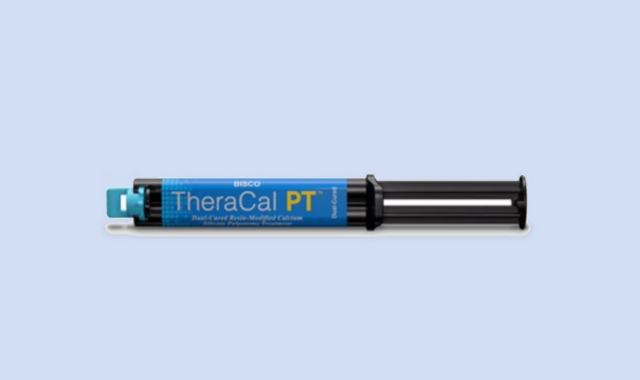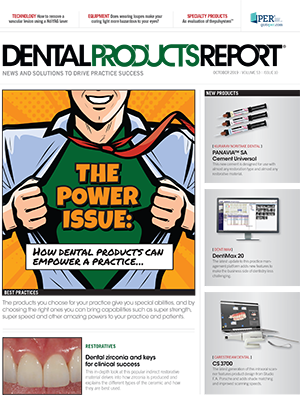Efficiently getting calcium to the pulp
The benefits TheraCal PT, a resin-modified calcium silicate material, has brought to one dentist’s practice.

After using TheraCal LC calcium silicate pulp liner for a few years and having great success, Dr. Ted Croll wanted to know if it could work as a primary tooth pulpotomy filling material as well.
A BISCO scientist told him that while it wasn’t indicated for that procedure, the company was developing a related material for exactly that purpose. That turned out to be TheraCal PT™.
Dr. Croll eagerly anticipated the release of the “PT version” and has been using the biocompatible, dual-cured, resin-modified calcium silicate pulp filler for his pediatric patients for about six months. He’s had excellent results with the few dozen cases he’s completed, and that’s a trend he expects to continue.
“TheraCal PT delivers calcium, which is very kind to the pulp,” Dr. Croll says. “BISCO has made delivery of the material extremely convenient. The hardened filler doesn’t break down because the resin component of the material stays solid and continues to deliver calcium. It’s unlike any other material I’ve ever used.”
Trending article: Why dentists should take a fresh look at new restorative innovations
It saves time
TheraCal PT makes pulpotomies much easier and quicker to complete than the zinc oxide/eugenol mixture, or the mineral trioxide aggregate (MTA) materials dentists have been using for years, Dr. Croll says. The fact that it’s light cured gives clinicians an immediate light-hardening of the material in addition to a chemical setting reaction. If the tooth is to receive full coronal coverage, such as with a preformed stainless steel or zirconia crown, there’s no need to place another material on top of the liner, which is a time saver.
“A chief problem with this procedure has always been the timing of treatment,” Dr. Croll says. “Once this material is placed in the pulp chamber after hemostasis is achieved, hardening of the material is immediate as the light beam is applied. The opacity of the material might make practitioners question whether there’s hardening of the material deep within the chamber, but the chemical cure obviates that concern. In the same way a dual-cured resin-based composite makes for sure through-and-through material setting, TheraCal PT rapidly and conveniently ensures optimal pulp chamber fill.”
All told, using TheraCal PT routinely cuts procedure time by five to 10 minutes, Dr. Croll says, sometimes more.
More from BISCO: Creating predictable restorations with Pro-V C&B
Fast, convenient delivery
The packaging also gives TheraCal PT an advantage over other pulpotomy filling options on the market, Dr. Croll says. The double-barreled delivery system and injection/mix- ing mechanism eliminates the need to squeeze the material out onto a pad, mix it together and then put it back in a syringe tip, which saves clinicians even more time.
And because the procedure doesn’t take as long as it once did, Dr. Croll’s young patients are out of the chair faster-and that’s a benefit for the practice as well as the patients “Those little mouths get tired
of opening and kids get wiggly,” Dr. Croll says. “TheraCal PT just makes the pulpotomy procedure easier, faster, and better for the patient, the dental assistant and the dentist.”
Product roundup: How to provide better results with bulk fill materials
A trusted company
Even though TheraCal PT hasn’t been on the market that long, Dr. Croll knows BISCO has done the research necessary to ensure it will hold up over time. In fact, he says using this material to protect the dental pulpal complex could become the standard of care for primary molars.
“The results over the first six months have been excellent, but of course clinicians want to know how their pulpotomies will perform three to five years down the road,” Dr. Croll says.
“That’s a big concern. If you do a pulpotomy for a primary molar in a 3-year-old, it may even need to last seven or eight years, the usual exfoliation time. Primary second molars may need to last longer than that. BISCO scientists are attuned to that clinical challenge and their research is geared to ensure long term success of TheraCal PT pulpotomies. The TheraCal PT formula is based on the same chemistry as TheraCal LC, which has proven to be a most durable and reliable lining material. I believe there is enough clinical experience and science behind the new material to use it with confidence.”
